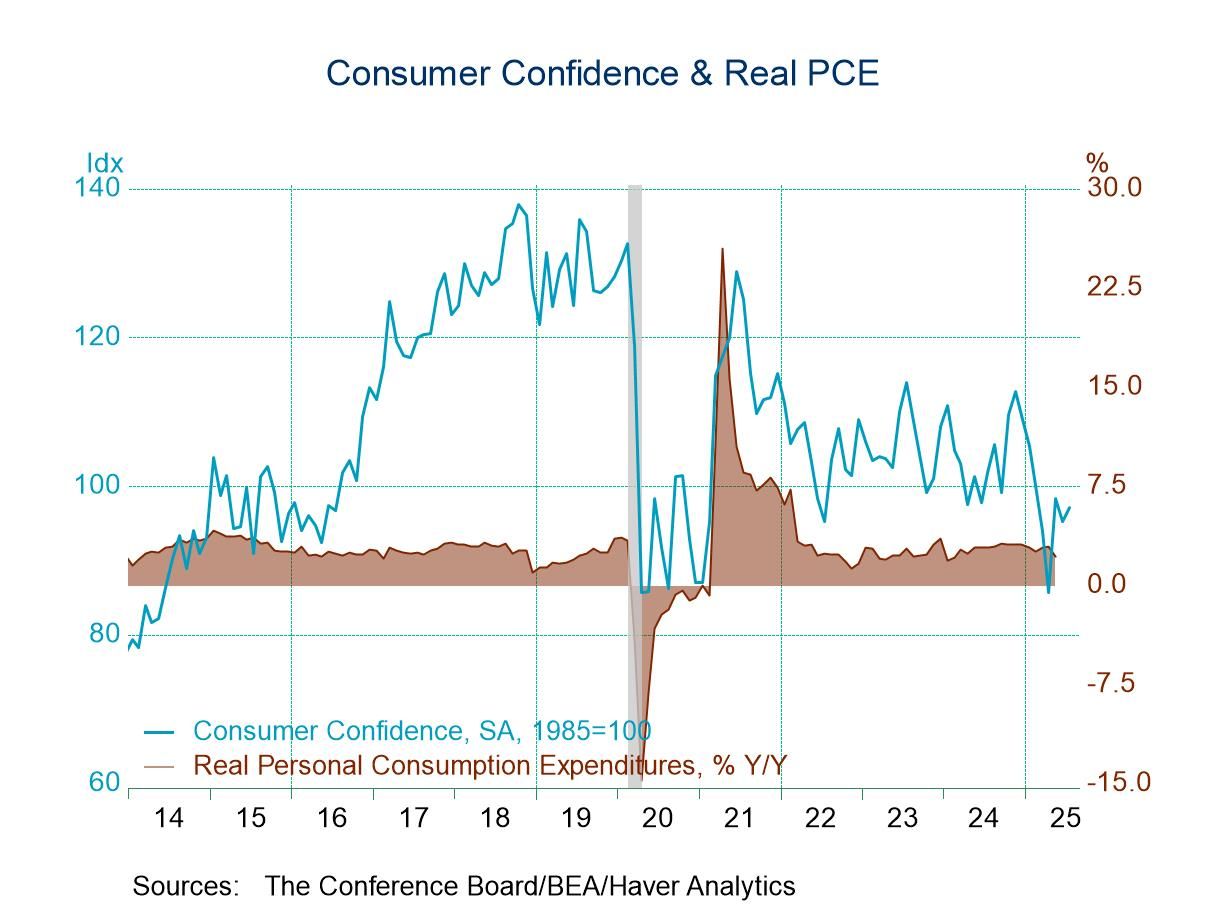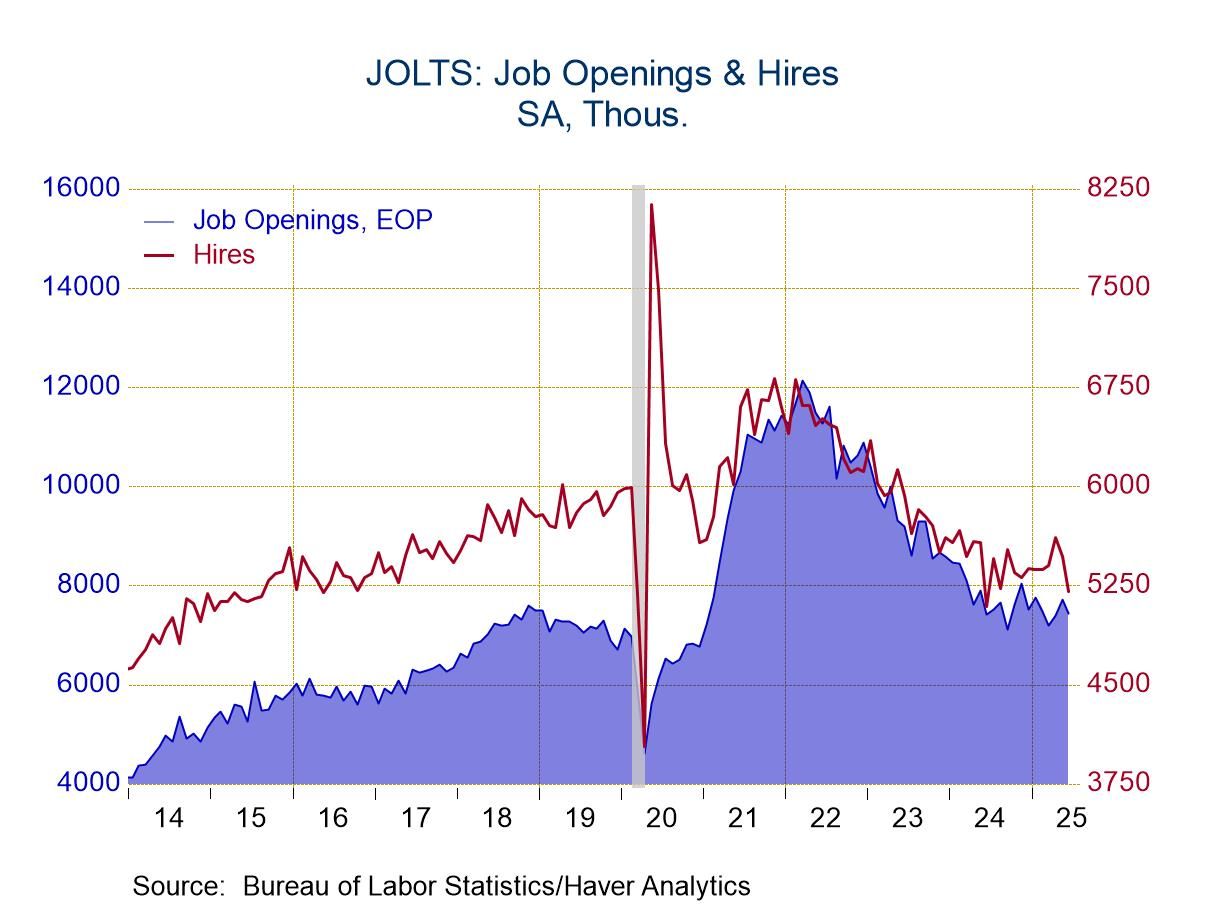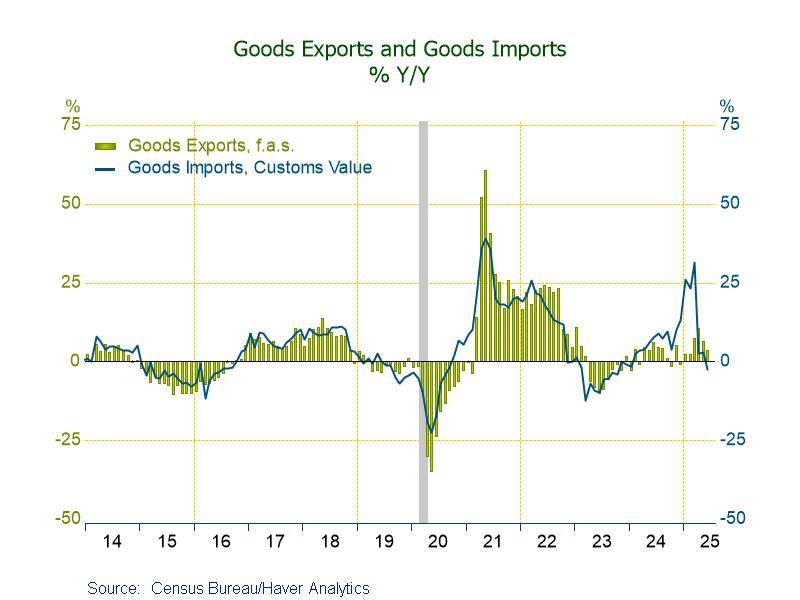U.S. Productivity Revised to Show Slightly Smaller Decrease in Q1, as Compensation Higher
Summary
- Nonfarm productivity fell at 7.3% annual rate in Q1.
- Compensation growth revised up meaningfully, especially in manufacturing.
- Unit labor cost growth revised up on upward compensation revision.


Nonfarm business sector productivity fell at a 7.3% annual rate in Q1, revised from -7.5% in the advance report published in early May. The Action Economics Forecast Survey looked for a 7.5% drop. Compared with a year ago, productivity decreased 0.6%.
Nonfarm business output growth was revised slightly to -2.3% Q/Q annual rate (+4.2% y/y) from the -2.4% reported before. Growth of hours worked was marginally reduced to a 5.4% annual rate in Q1 (+4.8% y/y) from 5.5% initially reported.
Hourly compensation was revised up to 4.4% q/q saar growth from 3.2% in the advance report. Compensation was also revised for Q4 2021 to a 10.5% annual rate of increase from 7.4% reported previously. In Q1, the combination of the 4.4% advance in compensation and the high rate of inflation meant that the Labor Department calculated a decline in real compensation of 4.4%. With the decline in productivity, that meant unit labor costs surged at a 12.6% annual rate (+8.2% y/y), revised from 11.6% initially reported. The Action Economics Forecast Survey had expected no revision in unit labor cost growth. New data for compensation in Q4 showed a 10.5% rate of advance, up from 7.4% reported previously; this led to a 3.9% increase in unit labor costs versus just 1.0% previously reported.
In the manufacturing sector, Q1 output growth was revised to 5.1% from the initial 5.7%. Growth in hours worked was reduced modestly to a 4.9% annual rate (3.4% y/y) from 5.1% initially. This combination led to a moderated reduction in the growth of output per hour to 0.2% (+1.5% y/y) from the previously reported 0.7%. Compensation in manufacturing was revised markedly higher, to a 5.9% rate of increase from 2.8% reported before; also, the Q4 advance in hourly compensation was revised to 9.6% from just 1.1% before. That meant that unit labor costs surged at a 10.3% rate in Q4, well above the 1.7% pace previously reported.
The productivity and labor cost data are available in Haver's USECON database. The expectations figures are in the AS1REPNA database.


Carol Stone, CBE
AuthorMore in Author Profile »Carol Stone, CBE came to Haver Analytics in 2003 following more than 35 years as a financial market economist at major Wall Street financial institutions, most especially Merrill Lynch and Nomura Securities. She has broad experience in analysis and forecasting of flow-of-funds accounts, the federal budget and Federal Reserve operations. At Nomura Securites, among other duties, she developed various indicator forecasting tools and edited a daily global publication produced in London and New York for readers in Tokyo. At Haver Analytics, Carol is a member of the Research Department, aiding database managers with research and documentation efforts, as well as posting commentary on select economic reports. In addition, she conducts Ways-of-the-World, a blog on economic issues for an Episcopal-Church-affiliated website, The Geranium Farm. During her career, Carol served as an officer of the Money Marketeers and the Downtown Economists Club. She has a PhD from NYU's Stern School of Business. She lives in Brooklyn, New York, and has a weekend home on Long Island.





